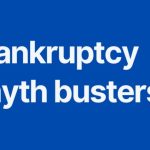When it comes to liquidation, the process doesn’t always apply to insolvent companies. Enter the Members Voluntary Liquidation (MVL). An MVL is a formal process designed for solvent companies to wind up its affairs when the company is no longer required or has reached its purpose, and the directors and shareholders want to convert its assets to cash for distribution among the shareholders. The below case study is a perfect example of the process.
Background
In 1996, a NSW-based company purchased a block of land and built a car racing track, which was hired out to amateur car racing enthusiasts. However, after the company’s owner and director subsequently fell ill, the property was sold. The next step was to distribute funds to the shareholders, and the director engaged Jirsch Sutherland to effect an orderly winding up via an MVL.
“The company’s director realised they needed a liquidator to get the funds out in the most tax-advantageous way*, and to liquidate the company so it wouldn’t be a ‘ghost’ company that would continue to exist but with no purpose,” explains Jirsch Sutherland Partner Andrew Spring, who worked on the matter.
Solution

The company’s accountant assessed the company’s financial position, and it was deemed it would be able to take advantage of the Small Business 15-year exemption for the capital gain realised on the property. The Small Business CGT Concession (SBCGT) provided for the funds to be fully exempt from CGT if distributed within two years of the CGT event.
Result
“Of note, is the fact that despite the exemption for the Company, the funds became taxable in the hands of the recipient shareholders,” explains Spring. “However, by initiating a solvent winding up via MVL and distributing the funds to the recipient shareholders as a Liquidator’s distribution during the two-year timeframe, the funds retained their tax free status.”
The result was that shareholders received nearly $4 million of non-taxable distribution.
Takeaway
If a client has tax free reserves available, the consideration of utilising a solvent liquidation to distribute the surplus funds may create a tax advantageous outcome for the shareholders.
If you or a client want to discuss Members Voluntary Liquidations, please don’t hesitate to contact our team of registered liquidators: https://www.jirschsutherland.com.au/our-people/
The role of a liquidator undertaking MVLs:
*Jirsch Sutherland does not provide tax advice and directors and shareholders should always seek independent and specialist tax advice. |











